You are here
New Releases
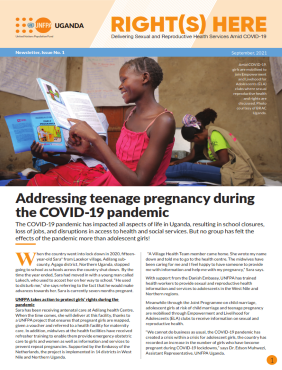
Right(s) Here: Delivering Sexual and Reproductive Health Services Amid COVID-19
The COVID-19 crisis has taken a staggering toll on people, communities and economies everywhere. But not everyone is affected equally. The pandemic is hitting marginalized communities harder, particularly women and girls, deepening inequalities and threatening efforts to leave no one behind. As health systems struggle to respond to the COVID-19 pandemic, we had to rethink our interventions to respond to the new reality, ensuring that sexual and reproductive health services are not sidelined.
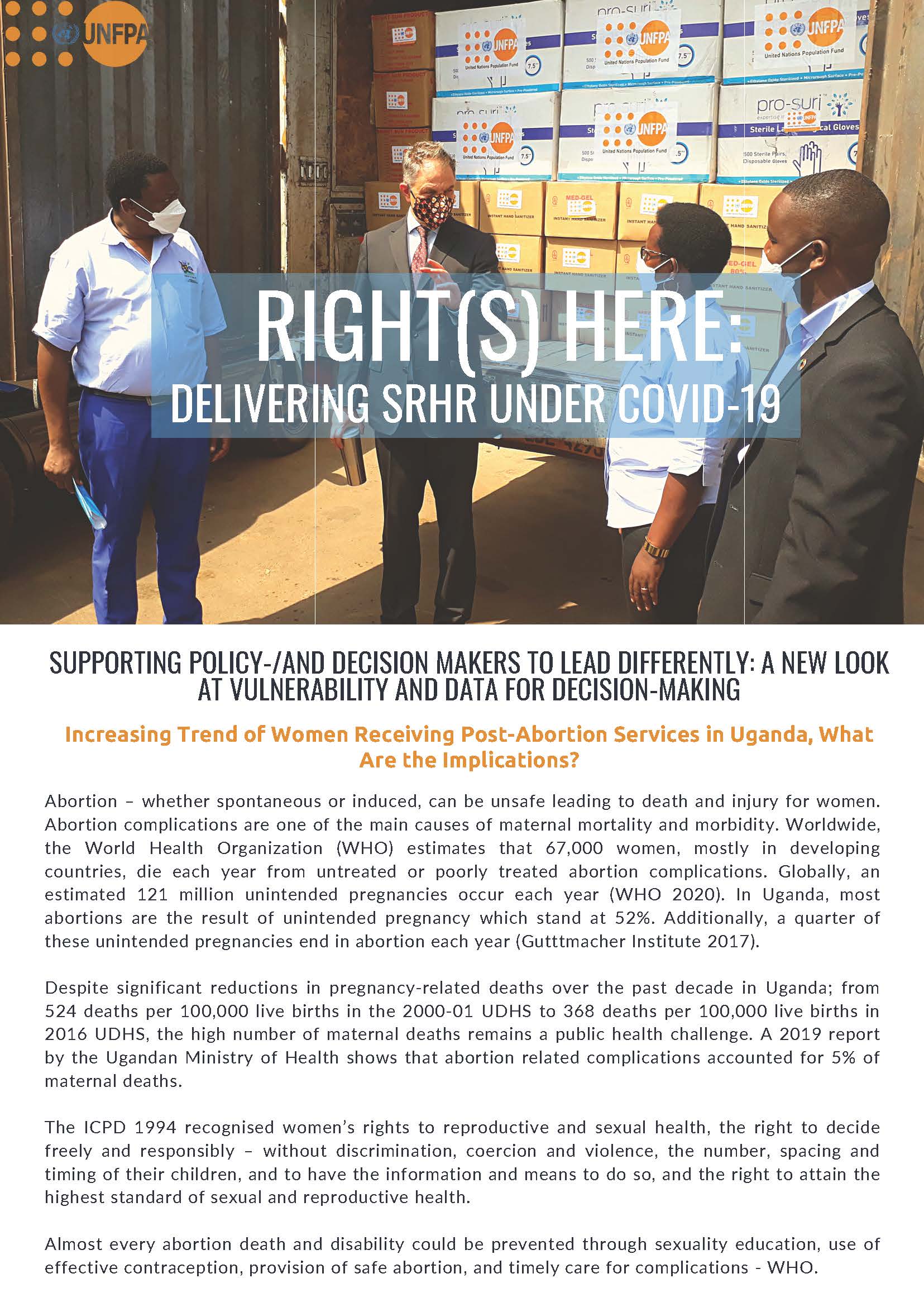
Right(s) here. Supporting Policy and Decision Makers to Lead Differently: A New Look At Vulnerability and Data for Decision-Making
Analysis of data from the Health Management Information System (HMIS) shows an increasing trend in number of women receiving Post-Abortion Care (PAC)
services in health facilities in 2020. The data on increasing number of women seekingpost abortion care services indicates a need forgreater action to reduce the negative impact onhealth and social economic outcomes of women andgirls, and health system as a whole.
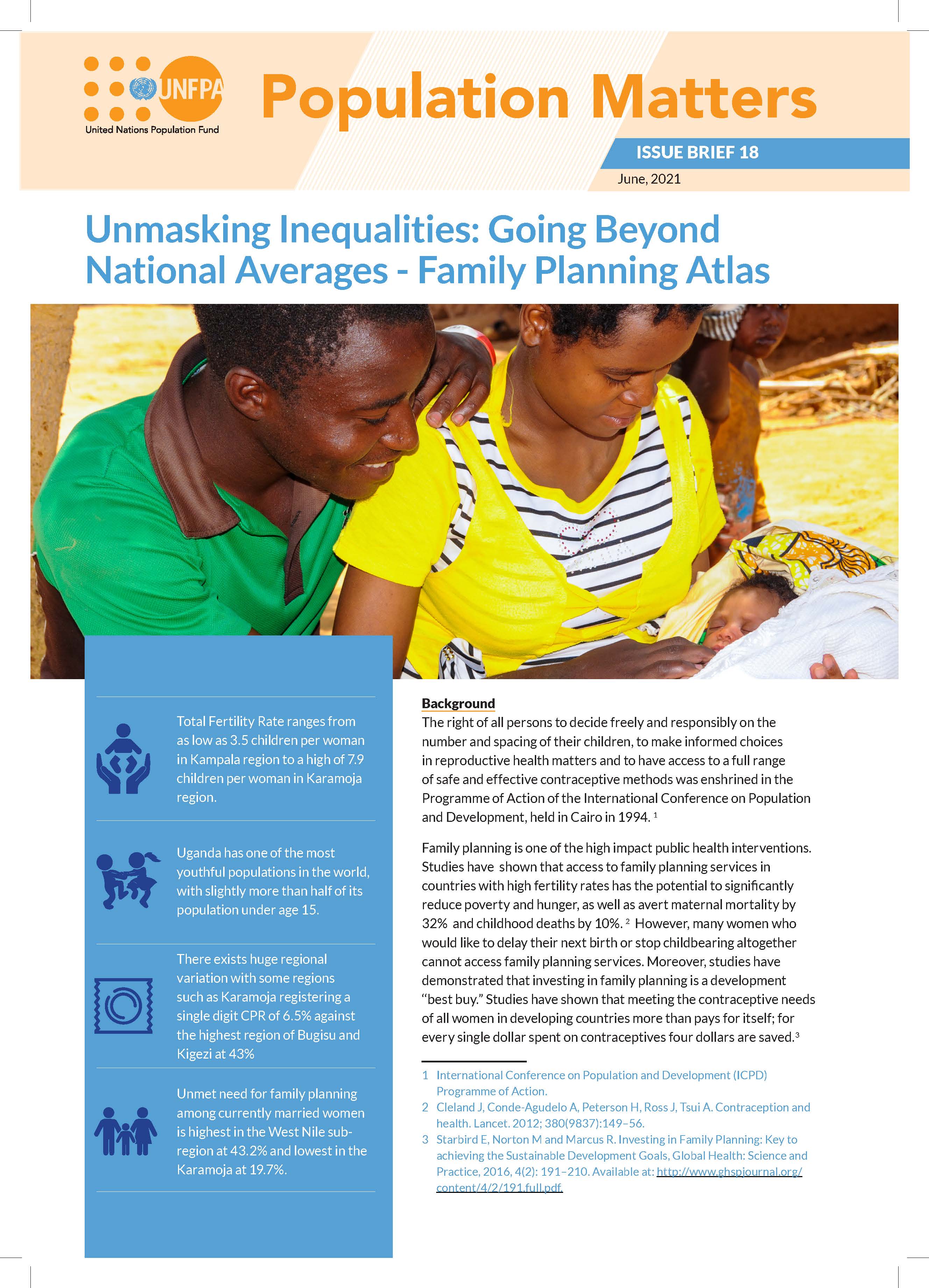
Unmasking Inequalities: Going Beyond National Averages - Family Planning Atlas
The right of all persons to decide freely and responsibly on the number and spacing of their children, to make informed choices in reproductive health matters and to have access to a full range of safe and effective contraceptive methods was enshrined in the Programme of Action of the International Conference on Population and Development. Family planning is one of the high impact public health interventions. Studies have shown that access to family planning services in countries with high fertility rates has the potential to significantly reduce poverty and hunger.
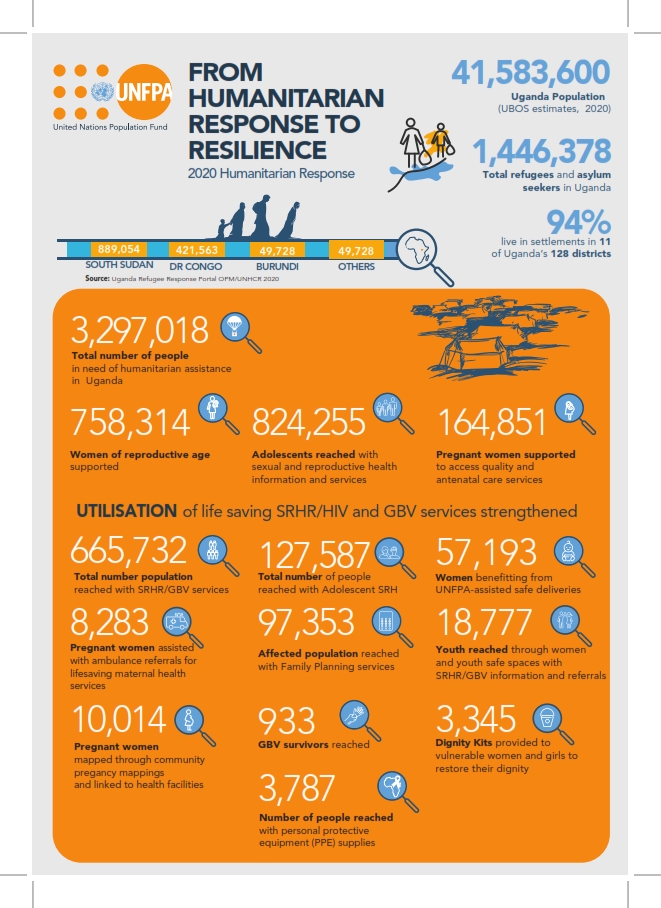
FROM HUMANITARIAN RESPONSE TO RESILIENCE: 2020 Humanitarian Response
In 2020, UNFPA Uganda received funds from various sources including UNFPA Emergency Fund, UNFPA Core Resources, CERF, SIDA, EU Spotlight, FCDO, DANIDA and the Netherlands Government to a tune of US$ 7,607,309 to support emergency programming and interventions for strengthening of lifesaving SRHR/HIV and GBV across the humanitarian/development nexus. UNFPA Uganda also supported strengthening of health and protection systems in refugee-hosting districts.
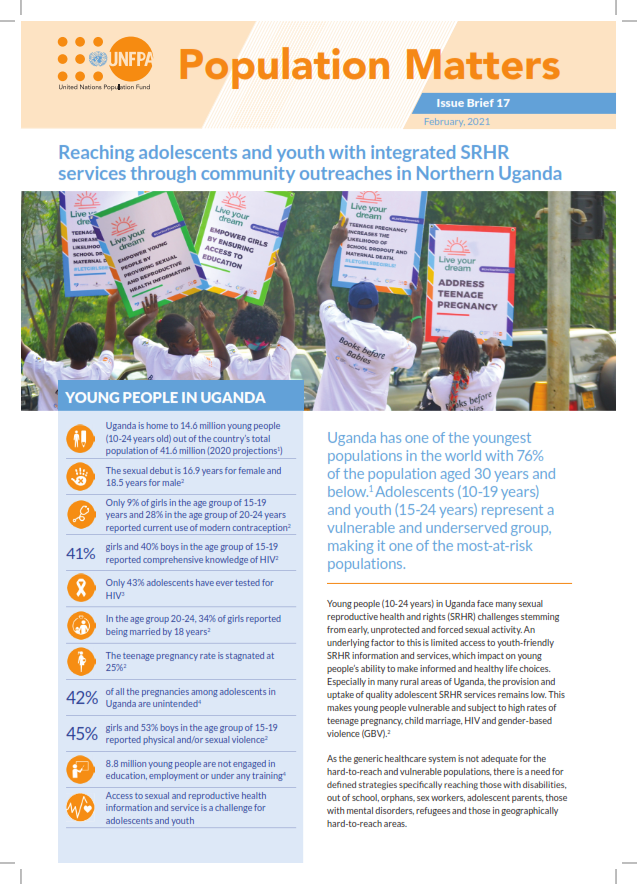
Reaching adolescents and youth with integrated SRHR services through community outreaches in Northern Uganda
The integrated SRHR community outreaches refer to community-based outreaches that offer an integrated package of services, including health education, family planning, HIV & Sexually Transmitted Infections (STIs) screening and testing, vaccinations, antenatal and postnatal care, GBV risk and response assessment among others.
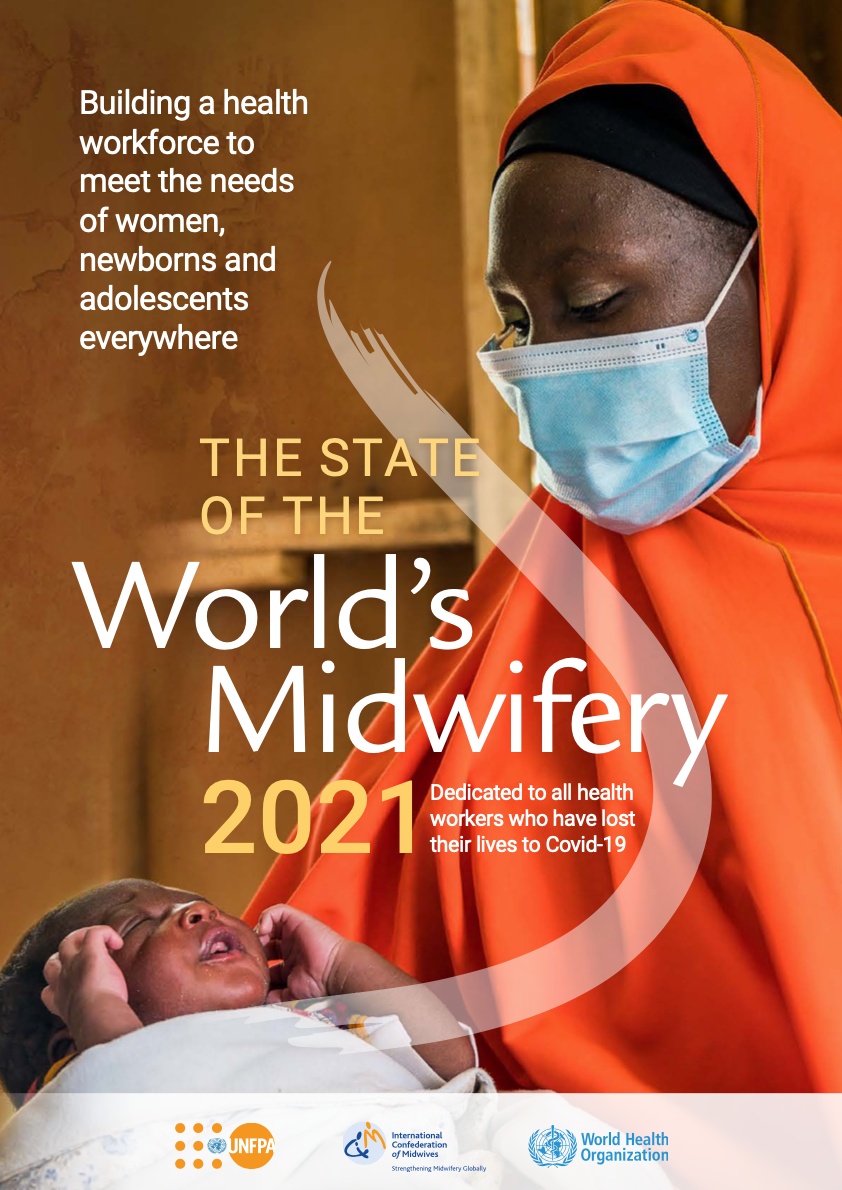
The State of the World's Midwifery 2021
The State of the World’s Midwifery 2021 builds on previous reports in the SoWMy series and represents an unprecedented effort to document the whole world’s Sexual, Reproductive, Maternal, Newborn and Adolescent Health workforce, with a focus on midwives. It calls for urgent investment in midwives to enable them to fulfil their potential.
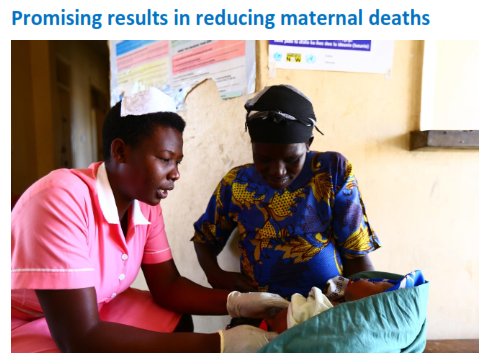
Promising results in reducing maternal deaths
Through the various maternal health interventions, an estimated 515,427 mothers were able to safely deliver in health facilities in the 55 UNFPA supported districts, including humanitarian districts in 2020.
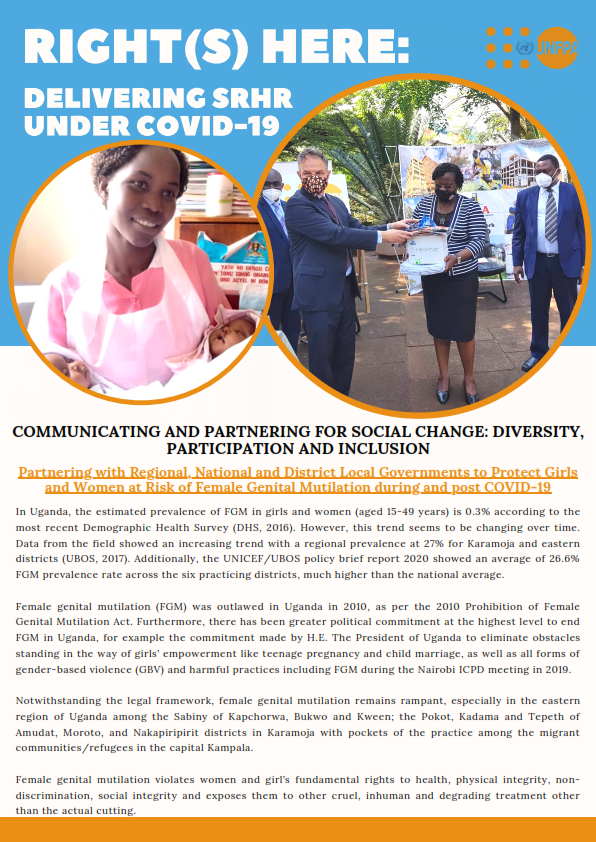
Right (s) Here: Delivering Sexual and Reproductive Health and Rights Under COVID-19: Issue 4.
Among the recommendations made, government needs to increase investment in social protection to reduce inequalities among the population caused by crises such as the COVID-19 pandemic, advocate for review and expansion of existing social protection programmes to prioritise vulnerable groups such as adolescents, women and girls, and promote gender equality and women’s empowerment in social protection programme design and implementation. It is also recommended to establish linkages between SRHR programmes with existing social protection programmes and services to address vulnerabilities exacerbated by poverty due to the COVID-19 pandemic.
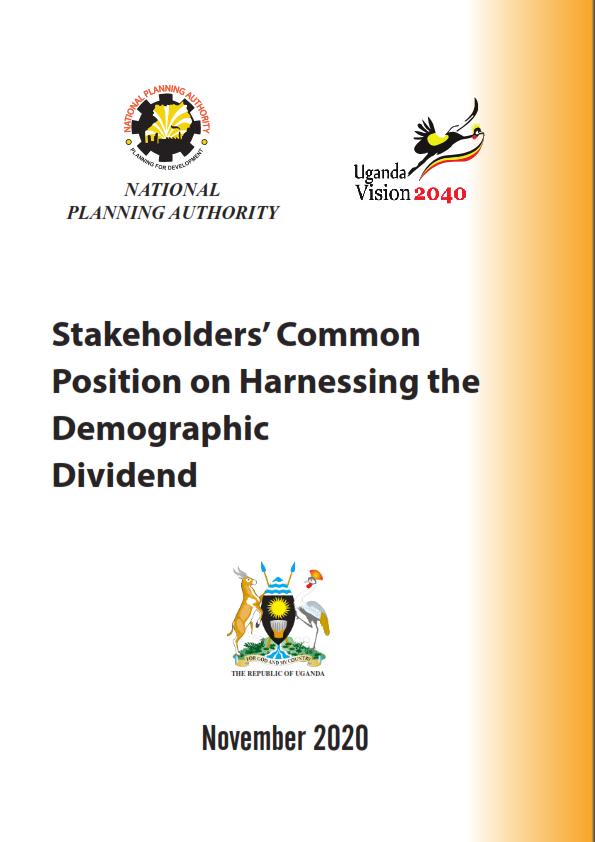
Stakeholders’ Common Position on Harnessing the Demographic Dividend
The Uganda Vision 2040 adopted harnessing the DD as a development strategy with a view that it will lead to a socioeconomic transformation that will support the emergence of a strong middle class. This Stakeholders’ Common Position on Harnessing the Demographic Dividend focuses on the five pillars for harnessing the DD to include the Need for a demographic transition, the need for enhanced investment in education, the need for enhanced investment for a healthy and productive human capital, the need for economic growth and employment creation; and the need for good governance and accountability.
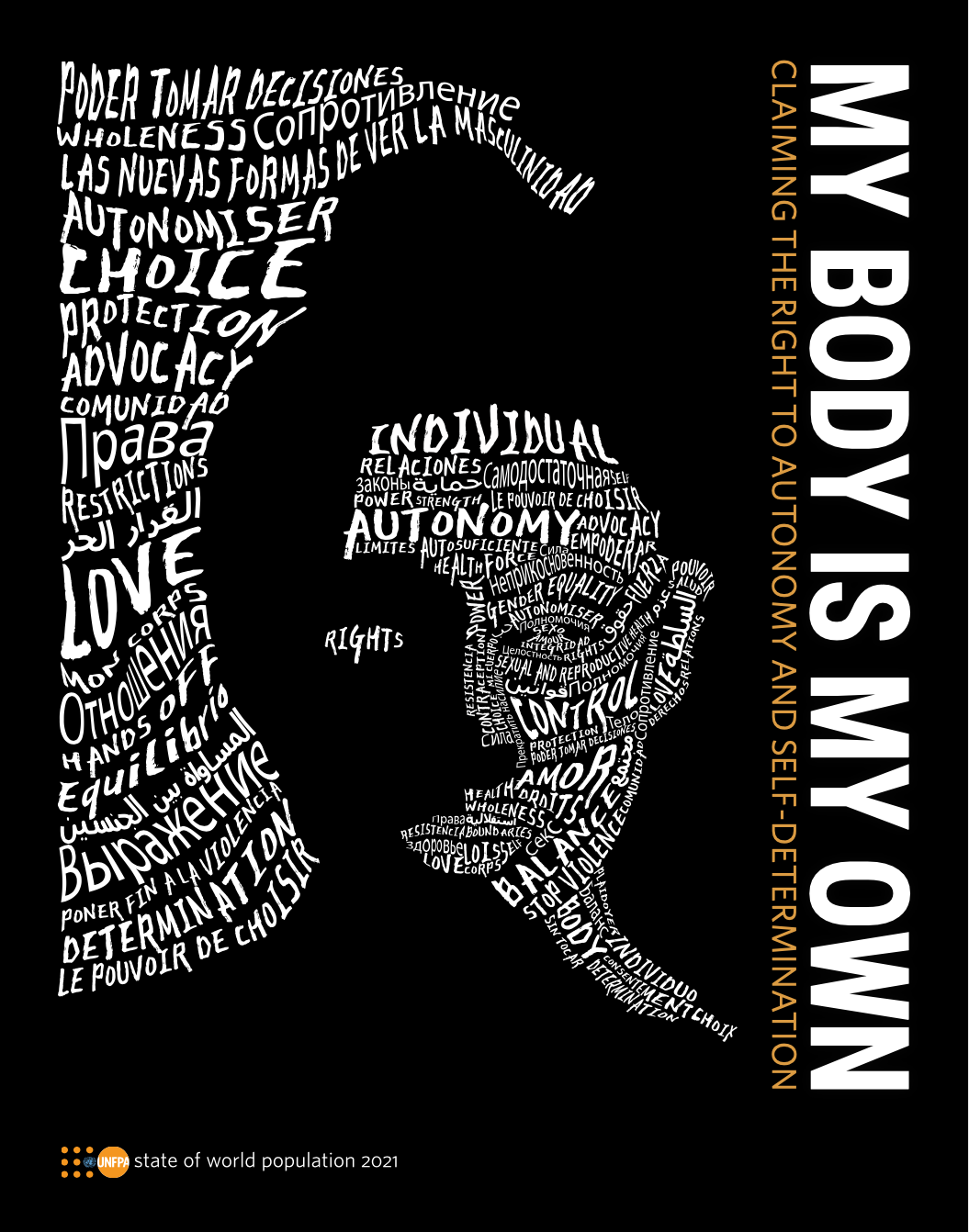
My Body Is My Own
We have the inherent right to choose what we do with our body, to ensure its protection and care, to pursue its expression. The quality of our lives depends on it. In fact, our lives themselves depend on it.